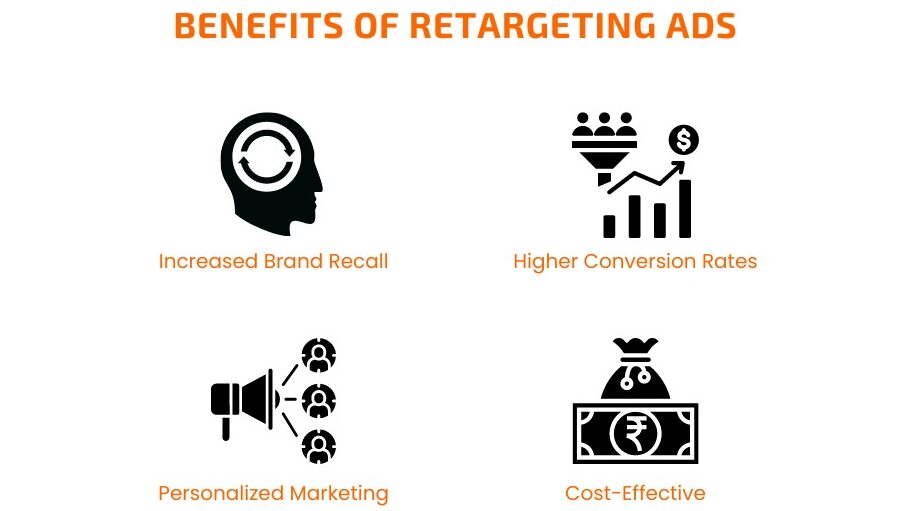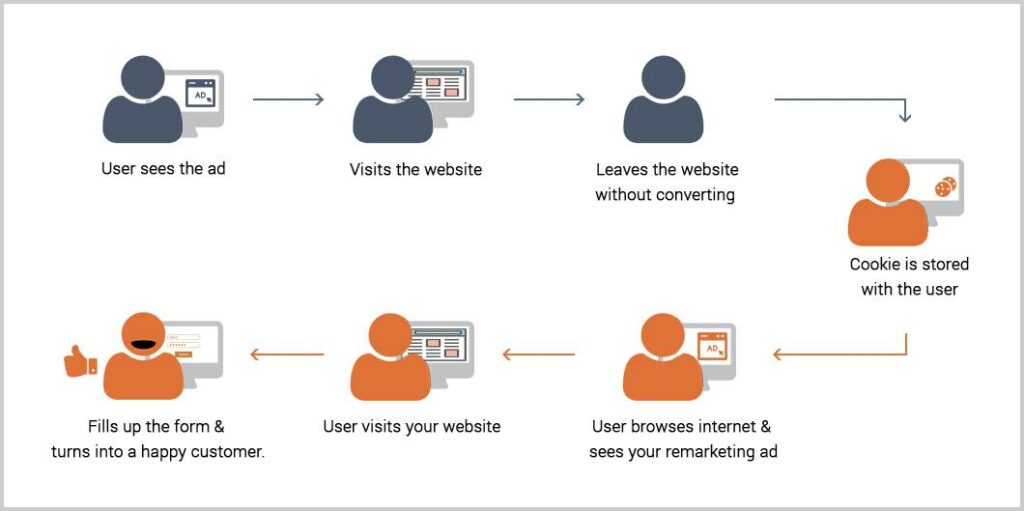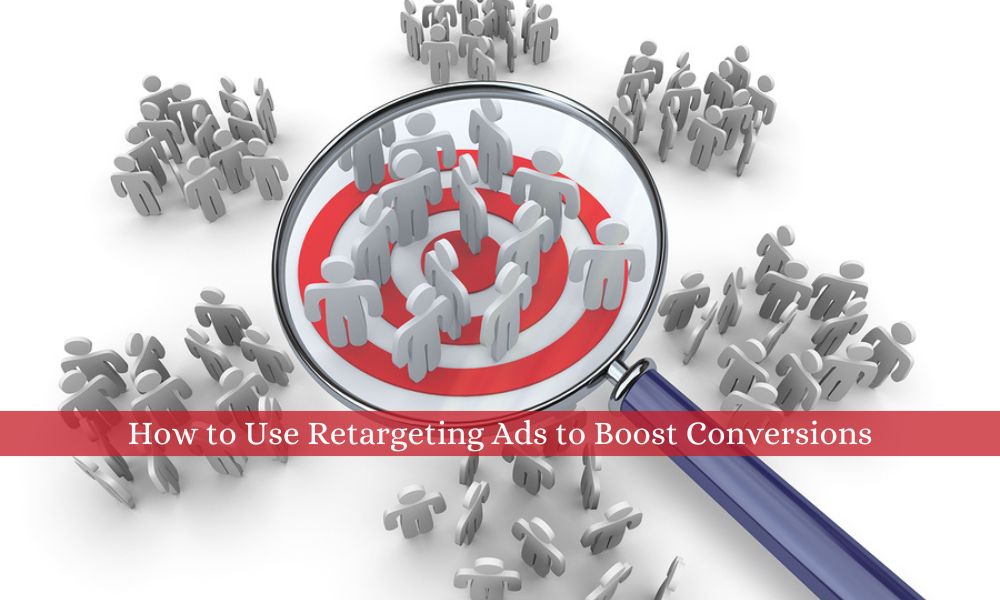If you’ve noticed the same ads popping up on your social media feeds after browsing for a product, you’ve experienced retargeting. In the world of digital marketing, driving conversions is the ultimate goal. Yet, not every visitor converts on their first visit to your website. This is where retargeting ads come into play. By strategically using retargeting ads, you can re-engage potential customers, keep your brand top-of-mind, and ultimately boost conversions. Here’s a comprehensive guide on how to use retargeting ads effectively.
What are Retargeting Ads?
Retargeting ads are online ads shown to people who have already visited your website or engaged with your content. These ads aim to remind potential customers about your products or services, encouraging them to return and take actions like making a purchase or signing up for a newsletter.
Benefits of Retargeting Ads

- Increased Brand Recall: Retargeting keeps your brand in front of potential customers, increasing the likelihood of them remembering you when they’re ready to purchase.
- Higher Conversion Rates: By targeting users who have already shown interest in your offerings, retargeting ads often have higher conversion rates compared to standard display ads.
- Cost-Effective: Retargeting ads typically yield a higher return on investment (ROI) because they focus on an audience that is more likely to convert.
- Personalized Marketing: Retargeting allows you to deliver personalized ads based on user’s previous interactions with your site.
Steps to Implement Retargeting Ads
1. Define Your Goals
Before launching a retargeting campaign, it’s crucial to define your goals. Are you looking to increase sales, drive sign-ups, or promote a special offer? Having clear objectives will help you design more effective ads and measure success accurately.
2. Segment Your Audience
Not all visitors are the same, and their interactions with your site will vary. Segment your audience based on their behavior to deliver more personalized ads. Common segments include:
- Cart Abandoners: Users who added items to their cart but didn’t complete the purchase.
- Product Viewers: Users who viewed specific products but didn’t add them to the cart.
- Previous Customers: Users who have made a purchase and might be interested in related products.
3. Choose the Right Retargeting Platform
Several platforms offer retargeting services, including Google Ads, Facebook Ads, and LinkedIn Ads. Choose a platform based on where your audience is most active and the type of retargeting you plan to implement.
4. Create Compelling Ad Content
Your ad content should be engaging and relevant to the user’s previous interactions with your site. Consider the following tips:
- Use High-Quality Images: Visuals should be eye-catching and reflect your brand’s aesthetics.
- Craft Persuasive Copy: Your ad copy should highlight the value proposition and include a clear call-to-action (CTA).
- Offer Incentives: Discounts, free shipping, or limited-time offers can entice users to return and convert.
5. Set Frequency Caps
While retargeting is powerful, overexposure can lead to ad fatigue and annoy potential customers. Set frequency caps to limit the number of times your ads are shown to the same user within a given timeframe.
6. Monitor and Optimize Your Campaigns
Regularly monitor the performance of your retargeting campaigns. Key metrics to track include click-through rates (CTR), conversion rates, and cost per conversion. Use this data to optimize your ads, audience segments, and bidding strategies.

Advanced Retargeting Strategies
1. Dynamic Retargeting
Dynamic retargeting allows you to show ads featuring specific products or services that users viewed on your site. This approach is particularly effective for e-commerce businesses. For example, if a user views a pair of shoes, they’ll see ads showcasing that exact pair, along with related products.
2. Sequential Retargeting
Sequential retargeting involves showing a series of ads that tell a story or guide users through a funnel. This strategy can help nurture leads and build a stronger connection with your audience. For instance, the first ad might introduce your brand, the second highlights product features, and the third offers a discount to encourage purchase.
3. Cross-Platform Retargeting
Users interact with your brand across multiple devices and platforms. Cross-platform retargeting ensures a seamless experience by showing consistent ads whether users are browsing on a desktop, mobile, or tablet. This approach increases the chances of reaching users wherever they are most active.
Common Pitfalls to Avoid
1. Poor Segmentation
Failing to segment your audience properly can lead to irrelevant ads, which can frustrate users and reduce the effectiveness of your campaigns. Ensure your segments are based on meaningful user behaviors and interactions.
2. Over-Retargeting
Bombarding users with too many ads can lead to ad fatigue and negative perceptions of your brand. Implement frequency caps and monitor the number of times your ads are shown to each user.
3. Ignoring Ad Creative
Even with the right audience, poorly designed ads won’t convert. Invest time in creating high-quality visuals and persuasive copy that resonate with your audience.
Conclusion:
Retargeting ads are a powerful tool in your digital marketing. By effectively implementing and optimizing retargeting campaigns, you can boost conversions, increase brand recall, and maximize ROI. Remember to define your goals, segment your audience, create compelling ad content, and continually monitor and refine your strategies for the best results. At Moving Digits, we specialize in helping businesses like yours harness the power of retargeting to achieve their marketing objectives. Also, if you’re looking to enhance your skills, our Digital Marketing Institute provides expert training to help you master digital marketing techniques.
Get in touch with us to learn more about our advanced digital marketing courses & services.









